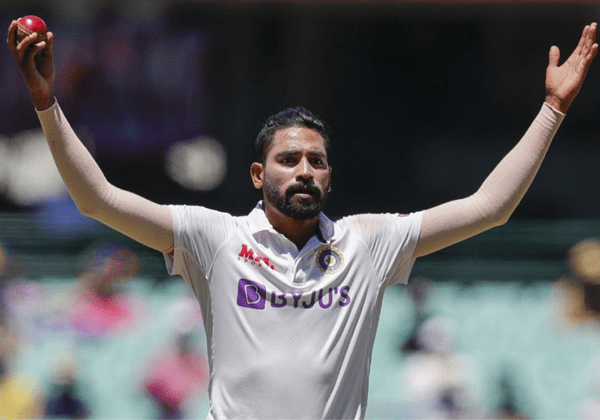When play was suspended at the SCG test earlier this year, it seemed as though a familiar scene was replaying itself before our eyes. As Australia was accelerating towards a win, Indian fast bowler Mohammad Siraj walked up to the umpires to halt play. He claimed he was called a “brown dog” by Australian fans while fielding on the boundary line, and play was suspended while the umpires investigated. It later emerged that Siraj and teammate Jasprit Bumrah had also reported racist abuse the day before, but as it was well after play had finished, nothing could be done.
As swiftly as security removed the alleged perpetrators, the social media backlash started. Cricket hashtags were flooded with people saying how the Indians simply cried racism because they were losing the match, how they couldn’t take a joke, how nothing was actually said and of course, that if they didn’t like it, they should go back to where they came from. This was a scene we had seen many times in Australian sport, from Adam Goodes to Lance Franklin.
Most striking was the press coverage, which often negated the racist abuse in the headline but linked a video where the words “brown dog” could clearly be heard. Editors often pointed to accounts suggesting that nothing racist was actually said, without mentioning first-hand accounts suggesting the opposite.
Following this, the media coverage of the Indian cricket team changed in Australia. Articles appeared about how the Indian team were unhappy with their quarantine in Brisbane and wanted to return home. There was little mention of the fact that the team had been on the road for almost four months, or that Siraj stayed in Australia to make his test debut, despite his father passing away during the series. The most fervent anti-vax COVID deniers suddenly became the biggest supporters of restrictions the country had ever seen. The team was portrayed as ungrateful and all the while, the racist taunts continued.
This was not the first Australia-India racism furore. In 2008, Harbhajan Singh was suspended for allegedly calling Andrew Symonds a “monkey.” Eventually, the allegations were dropped — but not before tension between the teams reached a boiling point, with India threatening to return home.
But there’s another dimension to this story which must be considered, and which mainstream media has so far ignored. Cricket Australia immediately released a strong statement condemning racism which was backed up by many former players. The media interpreted this as a purely altruistic gesture. Without wanting to question intentions, it should be noted that India is the global powerhouse of cricket. The strength and size of their Board means that they essentially control the International Cricket Council (ICC). Indeed, the first words of Lord Woolf’s independent review into the governance of the ICC said “Cricket is a great game. It deserves to have governance, including management and ethics, worthy of the sport. This is not the position at the present time.” When any board has that level of power there are always going to be problems.
In addition, international players flock to the Indian Premier League. The money is astronomical. In 2021, South African Chris Morris (who is not a regular in their national team) will be paid $2.88 million for six weeks of work. Given the ICC does not operate on an equitable funding model — and TV rights and money directly determine the financial stability of international cricket boards — no one wants to anger India’s cricket board.
India’s tour was like gold for Cricket Australia, which was struggling with COVID-related financial issues, as well as a lawsuit from Channel 7. The TV revenue that an Indian series brings into any country is astounding. For the Indian Premier League (a domestic competition), Star Sports India bought the rights to the tournament for over half a billion dollars annually. India’s tour went a long way towards financially saving Australian cricket — therefore there was no way that Cricket Australia was going to do anything to displease India.
So we can’t definitively view Cricket Australia’s statement as proof that Australian cricket owns up to racism. We certainly can’t look to the media for that either. So what did that incident really show? The most obvious thing is that Australia still has a long way to go in confronting racism in sport. One look at Indian media will also tell a completely different story to Australian media. But there’s more at play than simply racism. At the end of the day, money talks in cricket and the strength of financial motives will obscure any desire for real social change. In doing so, racism will be forgotten in Australian cricket and seen to be resolved. To summarise, we should look to Waleed Aly’s words about Adam Goodes:
“There is no mystery about this at all. And it’s not as simple as it being about race …It’s about the fact that Australia is generally a very tolerant society until its minorities demonstrate that they don’t know their place. And at that moment, the minute someone in a minority position acts as though they’re not a mere supplicant, then we lose our minds.”





